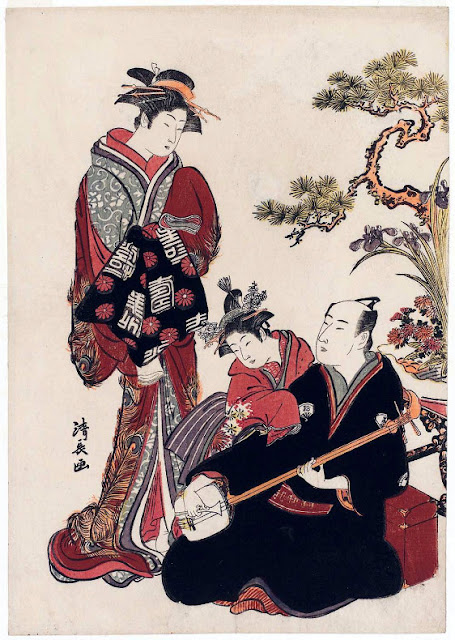 |
| Chikanobu: The Battle of Awazugahara: The warrior woman Tomoe Gozen and Hatakeyama Shigetada |
Here we have a triptych from 1883 by Toyohara Chikanobu: The Battle of Awazugahara: The warrior woman Tomoe Gozen and Hatakeyama Shigetada.
The print is an illustration to Heike Monogatari [平家物語] - The Tale of the Heike - which is a recording from the 13th century about the wars between the Taira (Heike) and the Minamoto (Genji) clan.
Tomoe Gozen was a female samurai who became a fighter in order to protect Kiso Yoshinaka, her beloved.





